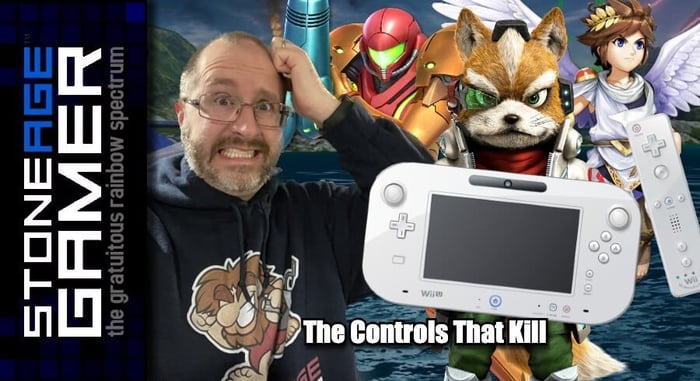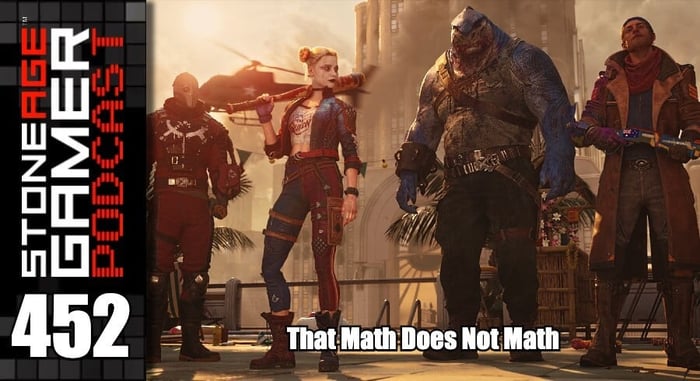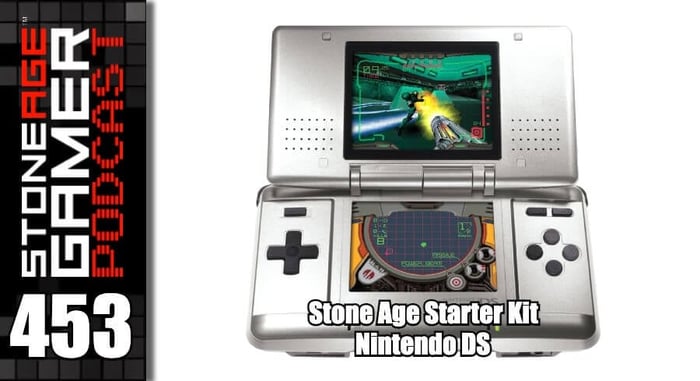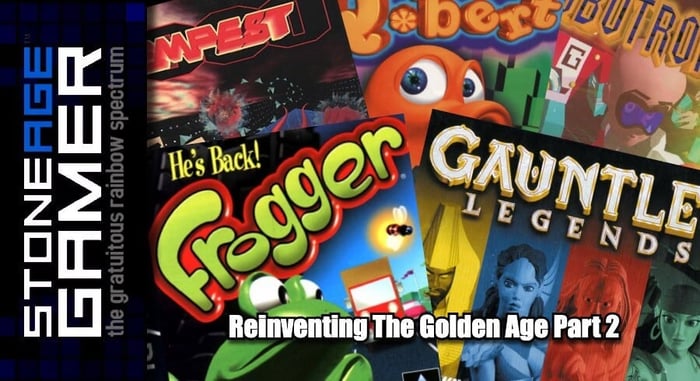
The Controls That Kill
Sometimes good games can transcend wacky control schemes, but wouldn't it be better if they didn't have to? In light of just how well Metroid Prime Remastered came out, let's look at a handful of other games with unconventional controls that Nintendo should give another chance to shine.
Transcript of the video:
Metroid Prime Remastered is a dream come true. Yes, it looks fantastic, and I’m thrilled to be finally playing this masterpiece in HD, but Prime’s visuals were never really a problem for me. No, the most important thing in Metroid Prime Remastered is the fact that I can finally, FINALLY, play one of my favorite games of all time with functional, normal controls. It’s really quite something, Metroid Prime is widely regarded as one of the finest video games ever made, and that’s in spite of its longstanding status of having bonkers control schemes. The GameCube version tossed conventional wisdom aside and replaced dual analog controls with single stick movement. The argument was that Metroid Prime wasn’t a traditional first person shooter, but the game takes place in a first person perspective, and you shoot. I get what they were going for, but the fact of the matter is, maneuvering in 3D space from that perspective works best with dual analog controls. The game functioned, and everything else about it was good enough to overcome the controls, but at the end of the day, most people would have preferred dual analog.
Then the game got ported to Wii which was a massive improvement… for the most part. Pointer controls were a terrific surrogate for keyboard and mouse controls, when they worked of course. The problem with the Wii remote is that if you’re playing in a room with too much sunlight, the IR sensor isn’t going to work right, which can easily render your game unplayable at certain times of day. The Wii Remote and Nunchuck combo also had a serious lack of buttons, which made things like switching visors and weapons unreliable and cumbersome. Both the GameCube and Wii had standard dual analog controllers, and yet neither version allowed for the one control scheme that everyone wanted to use.
But now here we are. Nintendo has finally let people play Metroid Prime the way they’ve always wanted to (and really should have been allowed to) and it’s amazing. Reviews are extremely high, it’s sitting at the top of the sales charts, even handily beating a brand new Kirby game. You love to see it. But it also gets me thinking of the other games in Nintendo’s back catalog that need this same treatment.
Nintendo has a history of making games that require some sort of bananas control mechanism, and if I’m being honest, sometimes it really has worked out for the best. A lot of these experiences that require a specific accessory or non-standard input device just wouldn’t be the same if they were to adapt them to a standard controller. Nintendo Land without the Gamepad would be a shadow of itself. And we all know how Donkey Kong Jungle Beat worked out without the Bongo controllers. But for every instance where it worked, there’s one where it didn’t. There are brilliant games out there that very few people have actually played because they’re hindered by Nintendo’s insistence on non-traditional control schemes. I say, If Skyward Sword and Metroid Prime can be successfully adapted to standard controls, these games should too.
First, let’s stick with Metroid. Of course I want Metroid Prime 2 and 3 to get the same treatment as Metroid Prime Remastered. But even if they just added traditional controls, I’d be happy. Heck, I’d love to see Hunters and Federation Force updated with standard controls too, but of all the 3D Metroid games that need a control facelift, Other M is the candidate that needs it the most.
Metroid Other M is a strange game for me because I actively despise the story, but I’ve actually played through the game from beginning to end multiple times because, well, it’s actually pretty fun. The exploration elements are kinda junk, and those pixel hunt scenes are dreadful, but the rest of the game is really cool. The problem is, Nintendo insisted that the game be played with a Wii Remote held sideways. And look, it’s neat that they were able to make the game work that way, and I have absolutely no problem with that control scheme existing, but having it be the only option to control the game? Insanity. This is a game about moving a character around in 3D space with a D-pad. That’s never a good idea, but it’s especially egregious here because the Wii Nunchuck came with the system! Everyone has the option to play with an analog stick! Wii Remote and Nunchuck would have been great for this game, but no. The only option is Wii Remote sideways.
Just look at this. There's no subtlety in movement available, and in order to shoot missiles I have to change my grip and point the controller at the TV. Every time! So if I’m in an intense situation, I have to go fumbling around with the controller constantly and while it’s technically functional, it sure as heck isn’t fun.
A modern controller would make this game so much better. The ability to switch to first person mode at the press of a button instead of having to physically change your controller grip every time you want to shoot a missile just makes sense. Naturally Id’ love for someone to just go in there and fix the flat out stupid story, but I’d be perfectly happy to just be able to play this game with a non-insane control scheme. There’s so much legitimately cool stuff in Other M that should be allowed to shine, and fresh controls would do the trick.
Sticking with the Wii, let’s talk about Donkey Kong. The Donkey Kong Country franchise is a big one. It has traditionally been a huge seller for Nintendo, and one of the series' biggest entries was Donkey Kong Country Returns for Wii. It’s a beautiful game with great level design, fantastic music, and some serious challenges. But just like with Metroid Other M, the controls here defy logic and reason. You do have the option to use a Nunchuck this time around, but we aren’t talking about a 3D action game, this is a 2D platformer, which plays best with a d-pad. But even the addition of the nunchuck still relegates several important commands to waggle for some reason! Ground pound, blowing, and rolling are all performed with waggle, which isn’t exactly the most reliable input option. Ground pound and blowing at least are only for secret collecting, but rolling is used for precision platforming, and it never feels right doing it here.
Again, I get making this control scheme an option because not everyone had a classic controller on Wii, but the fact that classic controller wasn’t even an option is mind boggling. The Classic Controller mimics the SNES pad, which is what the Donkey Kong Country games originated on! I should be able to move my character around with a D-pad, and perform all the game’s necessary functions with a button press, but the option to do that was very specifically and intentionally not given, and it hurts my head. Of course the game was re-released on 3DS with a fully functional control scheme intact, but that also brought along with it a graphical downgrade and it’s only playable on a tiny handheld device! This is an absolutely outstanding game, and it deserves to be played on a TV, in high definition, with controls that help instead of hinder!
Speaking of the 3DS, there’s no way to have a conversation about games that deserve traditional control schemes and not talk about the tragedy of Kid Icarus Uprising. This is a fantastic game. Honest to goodness, it’s one of the most ambitious and well-polished games Nintendo has ever produced in terms of visual spectacle and presentation. There’s voice acting throughout the endite game, and the writing is genuinely solid and hilarious. The visuals are easily among the best the 3DS ever saw, and there's even a pretty killer online multiplayer mode. Sakurai and his team put a ton of love into this project and it delivers in darn near every respect. Except for the fact that the game is physically painful to play.
Uprising is separated into two segments. Every stage starts with a flight segment followed by an on foot segment. During flight, you move Pit around with the analog pad, fire with the L button, and aim with the stylus on the touch screen. This works pretty well, except for the fact that you have to constantly support the weight of the 3DS in your left hand that’s also clawing around to fire with the L button while your right hand uses the touchscreen. Of course if it was just that, it wouldn’t be too hard to deal with, but the on foot segments are where this scheme really takes its toll. See, you have to use the stylus to both aim and move the camera in these areas, and this constant movement is absolutely brutal on the wrists. What’s more, the combat itself features Smash Bros style movements, meaning that you’ll frequently want to do a dash move by smashing the analog pad in a direction while shooting to pull off a powerful shot, and let me tell you, that doesn’t feel very good after a few minutes of play. This game actually came with a stand to put your 3DS on so you can technically play it easier, which is so completely insane I still don’t really know how it was allowed to ship like this.
But like Metroid Prime, this game is a genuine masterpiece and everything surrounding the bat-guano controls is good enough to make the pain worth it for the playthrough. Also like Prime, it’s already really good-looking. If ever there was a game that was positively begging for a standard dual analog control scheme, it’s Kid Icarus Uprising.
Traveling back a generation, let’s talk about The Legend of Zelda on the Nintendo DS. There were two games released on this platform, Phantom Hourglass and Spirit Tracks, and while they aren’t perfect games by any stretch of the imagination, it’s their control schemes that make them feel particularly unwelcoming. Now, unlike the other games on this list I have to admit that the touchscreen controls in these two are genuinely quite clever. For the most part they work really well. The problem is, as neat as they are, they’re no substitute for direct control. In order to move Link around, you sort of direct him by pressing on the screen and he’ll walk toward wherever your stylus is. This is combined with combat, which is just you tapping on the enemies you want to attack. Again, this technically works, but every time I’ve tried to play these games I can’t help thinking that I just want to move Link around myself and press a button to attack. We all know this works because that’s how every other Zelda game works! They even gave up on this formula when it came time to make Zelda games on the 3DS! Again, these controls function, and genuinely function better than everything else I’ve mentioned on this list, but why oh why isn’t there another option?
That just leaves the spaceship sized elephant in the room, Star Fox Zero. Whoo boy, this game. See, the thing about every other game on this list is, while the controls aren’t optimal, they don't completely ruin the experience. Everything else here is totally playable to conclusion just the way they are. It isn’t great, and I’ll always be wishing I was just using a regular controller the entire time, but it’s doable. Star Fox Zero on the other hand, is just a mess.
It’s a really neat thing in theory. You move the Wii U Gamepad around to aim. The TV is your camera view, and the Gamepad is your cockpit view. It’s a great idea, but in practice it just doesn’t work for everyone. Some people were able to get the hang of it for sure. The game has its fans after all. But most people were pretty well turned off almost immediately.
Me? I tried my best to stick with it. I really did. The thing is, when it works, it really is so incredibly cool. But the rest of the time it doesn’t, which means the game rarely feels good enough to play through without your head exploding from confusion.
I don’t know why this is such a hard concept for Nintendo to wrap their heads around, but people just want a new StarFox game. They don’t need strategy elements like Command, they don’t need Zelda style exploration like Star Fox Adventures, they don’t need on-foot segments like Assault. They just want a cool on rails shooter that looks awesome, has a fun story with these cool characters, and to blow stuff up. They sure as heck don’t want to be forced into a dual screen control scheme that feels like it requires a college course to wrap your head around. And just like Other M, it’s the cool action stuff that suffers the most. Other M was developed in conjunction with Team Ninja, and it’s that action stuff that’s the game’s strongest suit by far. Star Fox Zero was co-developed by freaking Platinum Games! Those guys love making games about insanely cool action setpieces! But here, it’s hard to appreciate any of them because of just how nutty this control scheme is. This game is good. It’s got a lot of cool variety and while I don't understand why they insist on retelling the Star Fox origins story over and over again, there’s such a good game here that’s been rendered virtually unplayable by this bonkers control scheme.





